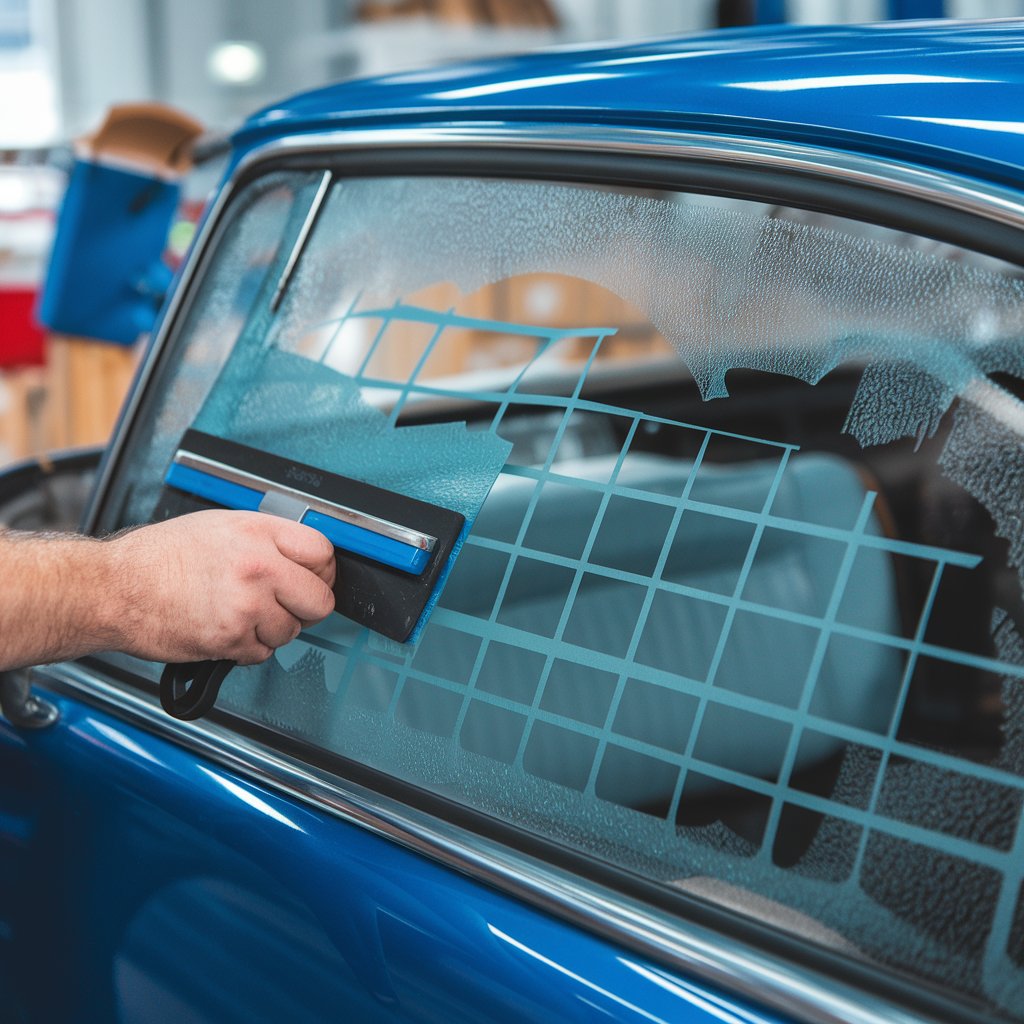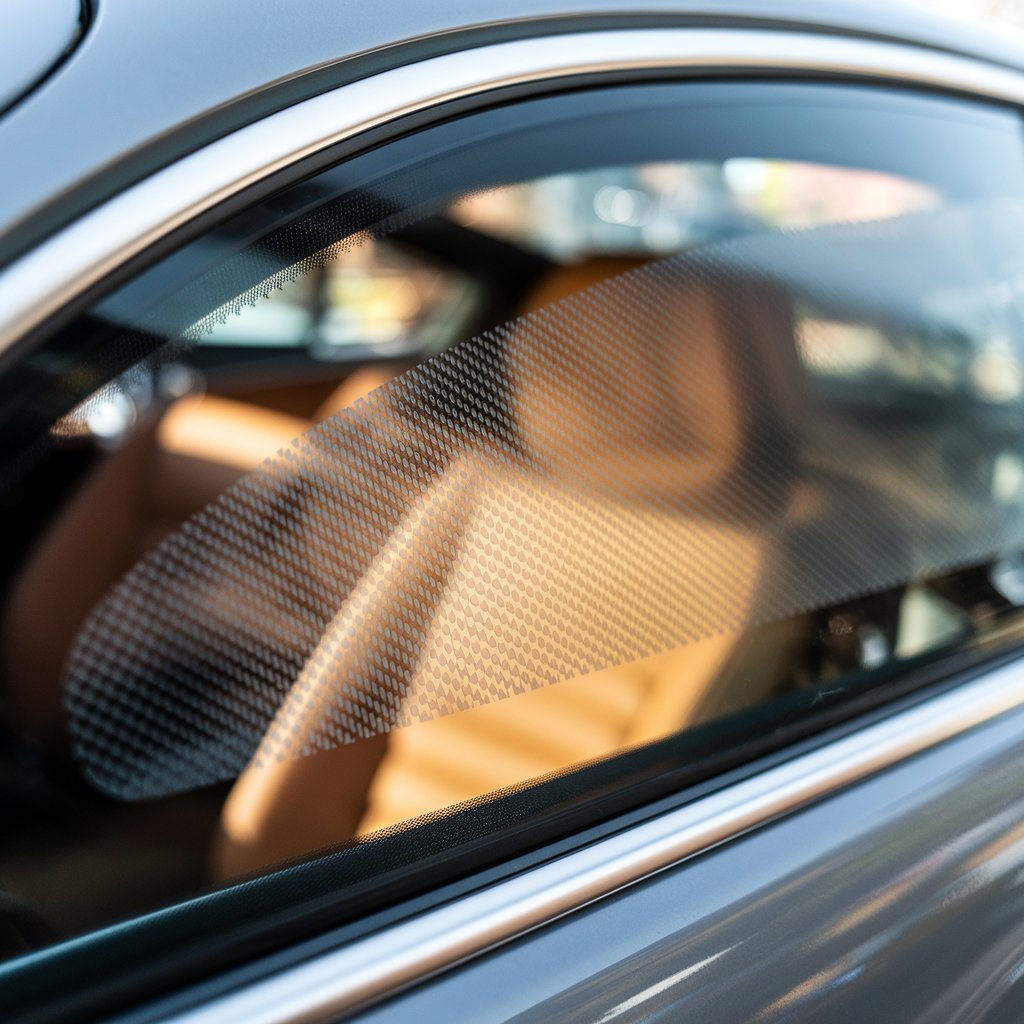Shatter resistant window film plays a vital role in enhancing vehicle safety. It minimizes glass fragmentation during collisions or break-ins, reducing injury risks from flying debris. Incorporating a shatter resistant film for sun protection not only adds a layer of impact resistance but also blocks harmful UV rays, contributing to both occupant safety and interior preservation. Holding shattered glass in place acts as a theft deterrent and shields occupants from potential harm. Additionally, it offers UV protection, preserving the car’s interior. Understanding its installation process and selection criteria is essential for maximizing its protective benefits and ensuring occupant safety.
Key Takeaways
- Shatter resistant window film minimizes injury risk by holding shattered glass together during accidents.
- It deters break-ins by providing an additional layer of security against forced entry.
- The film protects vehicle interiors from harmful UV rays, preserving material quality.
- It enhances occupant safety by reducing airborne glass projectiles in severe weather.
- Shatter resistant film reduces repair costs and potentially lowers insurance premiums.
What is Shatter Resistant Window Film?
Shatter resistant window film is a protective layer applied to car windows, designed to enhance safety by minimizing glass fragmentation upon impact.
This film typically consists of multiple layers of polyester film bonded with strong adhesives, providing durability and resilience.
Unlike regular tint, which primarily reduces glare and heat, shatterproof film is engineered to hold shattered glass in place, considerably reducing the risk of injury during accidents.

How Does Shatter Resistant Film Work
At the forefront of automotive safety innovations, shatter resistant window film operates as a protective layer that minimizes the risk of injury during glass breakage.
This film, when installed on car windows, enhances the glass’s resilience, providing an essential layer of protection. Upon impact, the shatter protection film holds broken shards together, preventing them from dispersing and causing injury.
This effectively transforms standard glass into shatterproof glass, greatly enhancing security. The film’s durable composition guarantees that, even under force, the glass remains largely intact, mitigating potential harm.
What Materials are Used in Anti-Shatter Film
Manufactured from a combination of robust materials, anti-shatter film primarily utilizes polyester-based compounds known for their tensile strength and durability.
This shatter-resistant safety film incorporates a self-adhesive layer, enhancing its application on glass surfaces. With varying thickness levels, these films are designed to provide ideal protective and secure glass protection, guaranteeing safety from potential hazards.
The window film’s polyester construction is critical for its ability to withstand impact without compromising visibility or aesthetic appeal.
Key benefits of using anti-shatter film include:
- Enhanced security: Prevents glass from shattering upon impact.
- Increased safety: Reduces the risk of injury from glass shards.
- Durability: Withstands harsh environmental conditions.
- Cost-effectiveness: Offers a protective solution without replacing windows.
- Peace of mind: Guarantees secure and reliable glass protection.
How is Shatterproof Window Film Different from Regular Tint
Unlike regular window tint, shatterproof window film is engineered specifically for safety and security purposes. This protection film adheres to the glass surface, providing an anti-shatter layer that considerably reduces the risk of injury in case of impact. Safety glass is further enhanced when this window film is installed, as it prevents the glass from shattering into dangerous shards. Regular tint primarily focuses on reducing heat and glare, lacking the safety and security features found in shatterproof films.
| Feature | Shatterproof Window Film | Regular Tint |
|---|---|---|
| Purpose | Safety and security | Aesthetic/Heat |
| Anti-Shatter | Yes | No |
| Safety Glass | Enhanced | Not enhanced |
| Risk of Injury | Reduced | Unchanged |
| Glass Surface | Reinforced | Cosmetic only |
The analytical evaluation reveals that shatterproof window films offer superior protection compared to regular tint.
How Does Window Film Provide Protection?
Shatter resistant window film offers a multi-faceted approach to vehicle protection by playing an essential role in minimizing injury risk during accidents, enhancing security, and shielding against harmful ultraviolet rays.
The film’s structure reduces the likelihood of glass shattering, thereby preventing dangerous shards from causing harm.
Additionally, privacy window film adds an extra layer of security by limiting visibility into the vehicle, acting as a deterrent against break-ins, while also effectively filtering out UV radiation, which can degrade interior materials and pose health risks to passengers.
Can Shatterproof Film Prevent Injury
How effectively can shatterproof film prevent injury during automotive accidents? By design, shatterproof glass film enhances safety through its transparent attachment to car windows.
In the event of glass breakage, the film holds the glass together, minimizing the risk of dangerous glass splinters. This mechanism not only protects vehicle occupants from potential injury but also maintains the structural integrity of the safety window.
- Prevents glass shards from flying unpredictably
- Reduces the risk of cuts and lacerations
- Maintains a barrier against external elements
- Enhances passenger safety during collisions
- Provides peace of mind in accident scenarios
This advanced glass film technology serves as an essential protective barrier, ensuring that even in unforeseen circumstances, occupants remain shielded from harm and potential injury.
What Role Does Safety Film Play in Security
When considering the security benefits of safety film, it becomes evident that its role extends beyond mere accident prevention.
High-quality shatter-resistant films provide an essential layer of defense for glass windows against potential threats such as blasts or forced entry attempts. Their installation fortifies windows, reducing the risk of glass shattering and causing injury.
The scratch-resistant and invisible nature of these films guarantees that they maintain aesthetics while delivering robust protection. Additionally, they offer a degree of UV protection by mitigating harmful UV rays and preserving interiors.
The multilayered functionality of safety film demonstrates its indispensable role in enhancing vehicle security. By integrating these films, vehicles are not only better protected from physical threats but also from long-term UV damage.
How Does Window Film Protect Against UV Rays
Window film serves a critical function in protecting against ultraviolet (UV) rays by incorporating advanced technology that filters out harmful radiation. This transparent barrier is essential for sun control, addressing window tinting needs by reducing UV exposure.
Films are transparent yet efficient, allowing natural light to enter while minimizing UV risk. Thicker films enhance this protection by offering additional resistance. When applied to large glass areas, they improve glazing stability.
- Prevents skin damage: Acts as a shield against harmful UV exposure.
- Reduces fading: Protects interior furnishings from UV-induced deterioration.
- Enhances comfort: Maintains cooler temperatures by blocking UV rays.
- Healthier environment: Contributes to overall well-being by reducing UV risks.
- Long-term savings: Lowers energy costs by improving sun control and thermal regulation.
Window film, consequently, is a crucial component in UV protection.

Why is Shatter Resistant Film Important for Car Windows?
Shatter resistant film is critical for car windows as it provides numerous benefits, including enhanced security and increased passenger safety.
The film’s ability to hold glass fragments together upon impact greatly reduces the risk of injury from broken glass, thereby contributing to occupant protection during accidents.
Furthermore, it acts as a deterrent against theft by making it more challenging for intruders to break through windows.
What are the Benefits of Shatterproof Film for Vehicles
Shatterproof film offers significant benefits for vehicles, akin to protective solutions for car windows.
When tested, these films minimize the impact of bomb blasts, ensuring that windows and doors remain intact. This technology prevents glass shards from becoming dangerous projectiles, similar to partitions in high-security environments vulnerable to terrorist threats.
Key advantages of shatterproof film include:
- Enhanced safety: Reduces the risk of injury from shattered glass.
- Increased durability: Strengthens vehicle windows against external forces.
- Cost-effectiveness: Lower repair costs compared to replacing windows.
- Privacy protection: Offers an added layer of discretion.
- UV protection: Shields passengers from harmful sun exposure.
These elements combined underscore the essential role of shatterproof film in automotive safety measures.
Does Shatter Resistant Film Enhance Vehicle Security
Why is shatter resistant film becoming an essential component in vehicle security systems? This film enhances security by providing an additional layer of protection to car windows, making unauthorized access more challenging.
Its robust construction resists impacts and delays break-ins, thereby deterring theft attempts. Engineered to absorb and distribute force, the film holds shattered glass together, preventing easy entry through broken windows.
This delay can be critical in thwarting theft, as it increases the time required to gain access, often discouraging would-be intruders. Additionally, shatter resistant film reduces the potential for smash-and-grab incidents, where quick access to valuables is sought.
How Does This Film Contribute to Passenger Safety
Beyond enhancing vehicle security, shatter resistant window film plays a pivotal role in passenger safety. This film greatly mitigates the risks associated with shattered glass during vehicular accidents, effectively reducing potential injury.
Holding glass fragments together prevents them from becoming airborne projectiles, thereby minimizing harm to occupants. Its application is critical for families, daily commuters, and long-distance travelers, providing an additional layer of protection that is often overlooked.
- Reduced risk of lacerations: It contains glass shards, preventing cuts and abrasions.
- Enhanced impact resistance: Absorbs and disperses energy from impacts, lessening injury potential.
- Increased structural integrity: Maintains window form, preventing collapse under stress.
- Improved accident survivability: Supports the overall safety framework of the vehicle.
- Protection from external threats: Shields occupants from flying debris during severe weather.
How is Shatter Resistant Window Film Installed?
The installation of shatter resistant window film involves precise surface preparation, careful alignment, and adherence to specific application techniques to secure ideal performance and safety.
While professional installation is recommended to guarantee a flawless finish and durability, some users may opt for a DIY approach with the right tools and instructions.
It is essential to evaluate the complexity of the process and potential safety implications when determining whether to undertake the installation personally or seek expert services.

What is the Process for Installing Window Film
Installing shatter resistant window film is a meticulous process that requires both precision and attention to detail to guarantee maximum safety and performance.
The procedure begins with thoroughly cleaning the car windows to remove any debris that might interfere with adhesion. Next, the film is measured and cut to fit the specific dimensions of each window.
The application involves carefully aligning the film, ensuring no air bubbles or creases form. A squeegee is used to remove excess water and secure the film in place. Finally, the edges are trimmed for a seamless finish.
- Enhanced safety: Reduces the risk of injury from shattered glass.
- Increased privacy: Deters potential theft.
- UV protection: Shields occupants from harmful rays.
- Thermal insulation: Helps maintain interior temperature.
- Durability: Adds longevity to vehicle glass.
Are There Professional Installation Options Available
Professional installation is critical for peak performance and safety. Trained technicians employ precise techniques to verify that the film adheres flawlessly to the car’s windows, minimizing air bubbles and imperfections. They possess specialized tools for accurate cutting and smoothing, guaranteeing a perfect fit to complex window shapes.
Professional installers are also knowledgeable about the varying film types and can recommend the best option based on specific protection needs.
Additionally, they adhere to strict safety standards, reducing the risk of damage to the vehicle during application. Utilizing a professional service not only guarantees a high-quality finish but also maintains the structural integrity of the film, enhancing its protective capabilities.
Can I Install Shatterproof Film Myself
Why would one consider installing shatterproof film themselves? Cost savings and personal satisfaction often drive the decision.
The installation of shatter resistant window film is a meticulous process requiring an understanding of materials and techniques. Proper surface preparation, precise measurements, and careful application are vital to guarantee effectiveness and safety.
Key considerations include:
- Precision: Accurate measurements prevent gaps and overlaps, guaranteeing maximum protection.
- Surface Cleanliness: A spotless surface prevents bubbles and enhances adhesion.
- Technique Mastery: Applying film requires skill to avoid creases and guarantee smoothness.
- Patience: Rushing may lead to errors, compromising safety and effectiveness.
- Tool Selection: Adequate tools like squeegees and cutters are essential for professional results.
Undertaking this task demands both technical skill and safety awareness, guaranteeing the film performs its protective function effectively.
What to Consider When Choosing Shatter Resistant Film?
When selecting shatter resistant window film, it is essential to assess the appropriate thickness based on specific protection needs, such as impact resistance and UV blocking capabilities.
Evaluating the different types of films available, including multi-layered and tinted options, can further align the choice with safety and aesthetic requirements.
Ensuring high-quality film selection involves verifying product certifications and manufacturer reputation to guarantee durability and performance under various conditions.
How Do I Determine the Right Thickness for My Needs
Selecting the appropriate thickness for shatter-resistant window film is essential for maximum protection and performance. The film’s thickness influences its ability to withstand impacts and deter break-ins. Typically measured in mils, thickness options range from 2 to 15 mils, with thicker films offering enhanced protection.
When deciding on thickness, several factors should be considered:
- Threat Level: Assess potential risks, such as vandalism or severe weather, to determine necessary protection.
- Budget Constraints: Balance the need for protection with available financial resources.
- Vehicle Use: Different uses may require varying levels of protection, such as commercial versus personal.
- Aesthetic Preferences: Thicker films may alter window appearance; consider transparency needs.
- Installation Complexity: Thicker films can be more challenging to install, impacting time and cost.
Understanding these considerations guarantees maximum safety and efficiency.
What Types of Shatter Resistant Films are Available
Determining the right thickness is only part of guaranteeing ideal protection with shatter-resistant window films. Various types, each with distinct properties, cater to different safety needs.
Solar film for car applications often overlaps with shatter-resistant technologies, offering both thermal control and enhanced protection. Dyed films offer minimal shatter resistance but enhance privacy and heat rejection. Metallized films, while providing stronger anti-shatter capabilities, may interfere with electronic signals. Hybrid films combine dyed and metallized features for balanced performance without signal disruption.
Ceramic films are superior in shatter resistance and UV protection, maintaining visibility without signal interference. Security films, often multi-layered, are specifically engineered for maximum impact resistance and to deter break-ins.
When selecting, consider environmental conditions, vehicle type, and specific safety requirements. Prioritizing these factors guarantees optimal protection and long-term performance for vehicular occupants and assets.
How to Ensure High-Quality Film Selection
Why is it crucial to guarantee high-quality film selection for shatter-resistant window films? Confirming the right choice can considerably impact safety and performance.
High-quality films not only enhance protection against break-ins and accidents but also maintain visibility and durability under various conditions.
Key considerations include:
- Material Strength: Choose films made from robust materials like polyester for ideal resilience.
- UV Rejection Rate: High UV rejection rates protect against harmful rays, preserving interior quality.
- Adhesive Quality: High-grade adhesives promote longevity and stability, preventing peeling and bubbling.
- Thickness: Opt for a substantial thickness to maximize impact resistance without compromising clarity.
- Certification: Look for certifications that attest to the film’s performance standards, promoting reliability and peace of mind.
Each factor plays a crucial role in safeguarding vehicle occupants and assets.
Conclusion
To sum up, shatter resistant window film serves as an essential component in automotive safety technology. By effectively minimizing glass fragmentation, it safeguards occupants from potential injuries and enhances vehicle security against theft. The film’s UV protection also contributes to the preservation of the vehicle’s interior, extending its longevity. When selecting a film, factors such as thickness, material quality, and professional installation should be considered to guarantee ideal protection. Additionally, for those updating or replacing old installations, understanding proper sun control film removal techniques ensures clean results without damaging the glass. Ultimately, this film provides an all-encompassing safety solution for modern vehicles.






